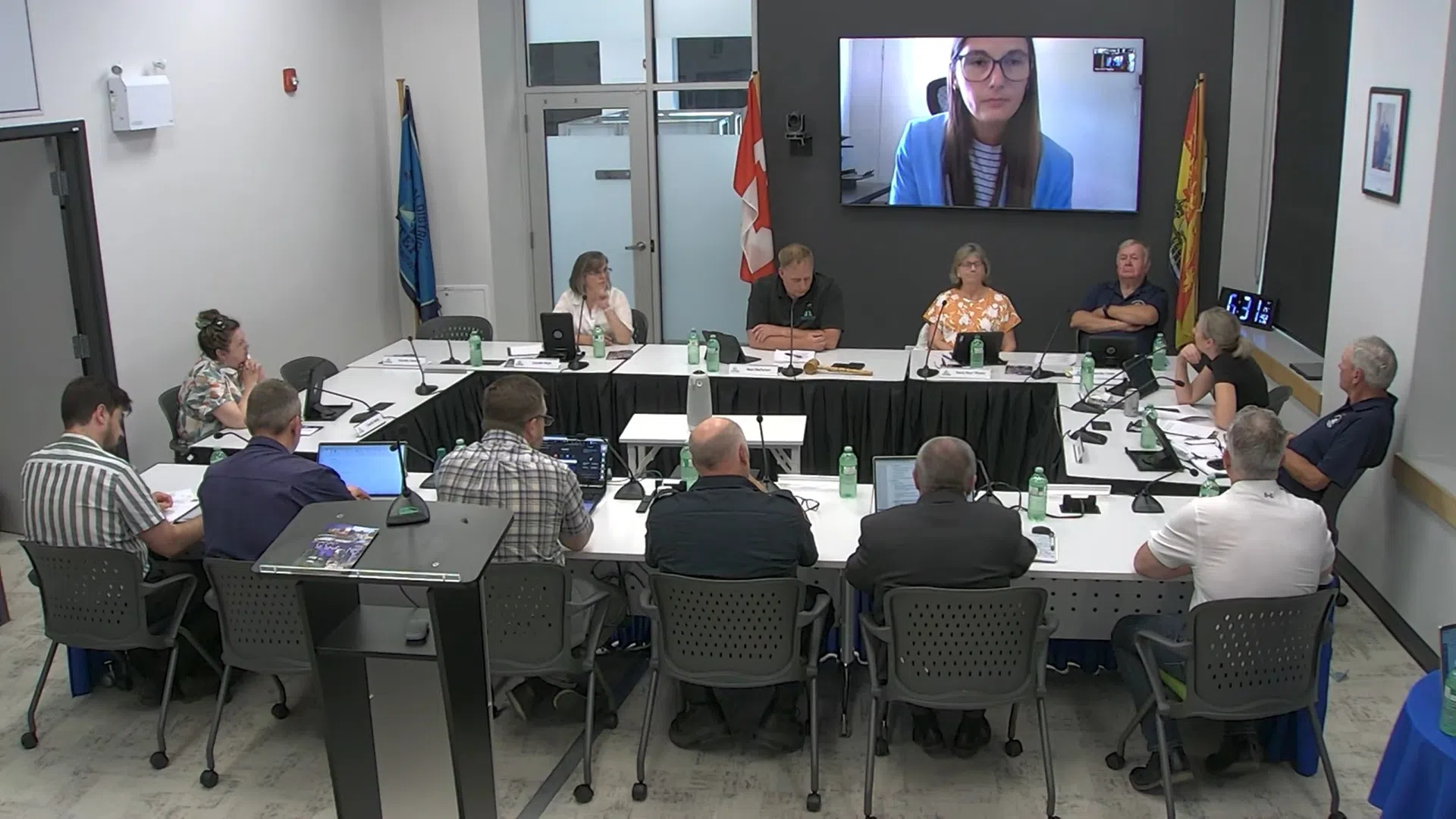There is widespread concern about safety in public spaces throughout St. Stephen, according to a recent survey.
The municipality commissioned the Canadian Centre for Safer Communities to conduct a community safety survey.
Results of the survey and some of the emerging priorities were presented to the public at a recent council meeting.
The report suggested that improving safety in public spaces should be a key focus for the municipality in any future safety planning.
Around two-thirds of residents said they are dissatisfied with their personal safety, and more than 75 per cent reported feeling unsafe downtown or in parks after dark.
“Many residents linked their sense of safety to visible concerns like drug use, homelessness, and public intoxication,” said the 79-page report.
“Others described deeper issues, including a lack of trust in local leadership, inadequate street lighting, or the experience of being judged or excluded due to poverty, addiction, or mental illness.”
Residents believe crime has increased
More than four-in-five residents believe that crime has increased in St. Stephen over the past three years, and almost half believe crime rates are higher in the town than the rest of the province.
Around 57 per cent said they were very concerned about experiencing crime, and more than 38 per cent said it often or always limits their activities. Just over one-quarter of people with children or caregiving roles said they were not at all comfortable with their children playing outside.
Nearly 32 per cent believe government spending on crime should be evenly split between enforcement and prevention, while around 31 per cent favour a heavier focus on enforcement, said the survey.
When it comes to substance use, nearly 90 per cent said it has increased over the past three years, with fentanly and crystal meth cited as the most serious concerns.
Transportation an issue to access services
The survey also looked at the accessibility of services and found transportation was the most significant barrier, with over 70 per cent citing cost or location issues.
“Many services — especially those related to housing, mental health, and addiction — were seen as inaccessible, particularly by lower-income residents,” said the report.
Others described deeper issues, including a lack of trust in local leadership, inadequate street lighting, or the experience of being judged or excluded due to poverty, addiction, or mental illness.
Another section of the survey on “Belonging, Trust and Inclusion” found just over 50 per cent of residents reported a moderate or weak sense of belonging in the community.
Those with a weaker sense of belonging cite several things, including exclusion for newer residents, issues related to municipal leadership, decline in community events, safety and crime concerns, stigma, social division and isolation. Those with a strong sense of belonging attribute it to long-term residency, generational ties, strong personal and social connections and community involvement.
Below is a summary of the priorities that emerged based on the findings of the survey:
- Interpret data through a lens of representation and equity: Because most respondents were white, housed and higher income, future planning should engage equity-deserving groups to better reflect diverse community realities.
- Widespread concern about safety in public spaces: Many residents reported feeling unsafe in public spaces — especially downtown, in parks and after dark — which should be a key focus in future safety planning.
- Consider local communication patterns: Residents rely heavily on word of mouth and social media for safety information, which should guide future outreach and communication strategies.
- Address community polarization and stigma: Deep divides exist between enforcement- and support-focused perspectives, especially on topics like homelessness and harm reduction, underscoring the need for inclusive dialogue.
- Acknowledge and address stigma around homelessness: Some residents associate homelessness with crime, highlighting the need for human-rights-based approaches that reduce stigma and promote inclusion.
- Support multi-sector collaboration: Residents see safety as a shared responsibility across police, health, social services, municipalities and community groups, pointing to the need for coordinated, upstream strategies.
- Center equity in safety planning: Women, racialized residents and low-income individuals often reported greater fear and exclusion, emphasizing the need for equity-centered planning.
- Reduce barriers to accessing support services: Services related to housing, mental health and addiction are often inaccessible due to cost, stigma and availability, requiring improved coordination and access.
- Address transportation as a cross-cutting barrier: Lack of affordable and reliable transportation limits access to basic services and opportunities, especially for rural and low-income residents.
- Strengthen responses to substance use through education and harm reduction: Drug use is a major safety concern, and addressing it requires reducing stigma, expanding harm reduction and providing trauma-informed care.
- Expand social and cultural infrastructure to promote connection: A lack of arts, culture, and social spaces — especially for adults and teens — limits inclusion, pointing to the need for more community-building opportunities.
Councillors voted to accept the report but did not commit to taking any specific actions at this time.








